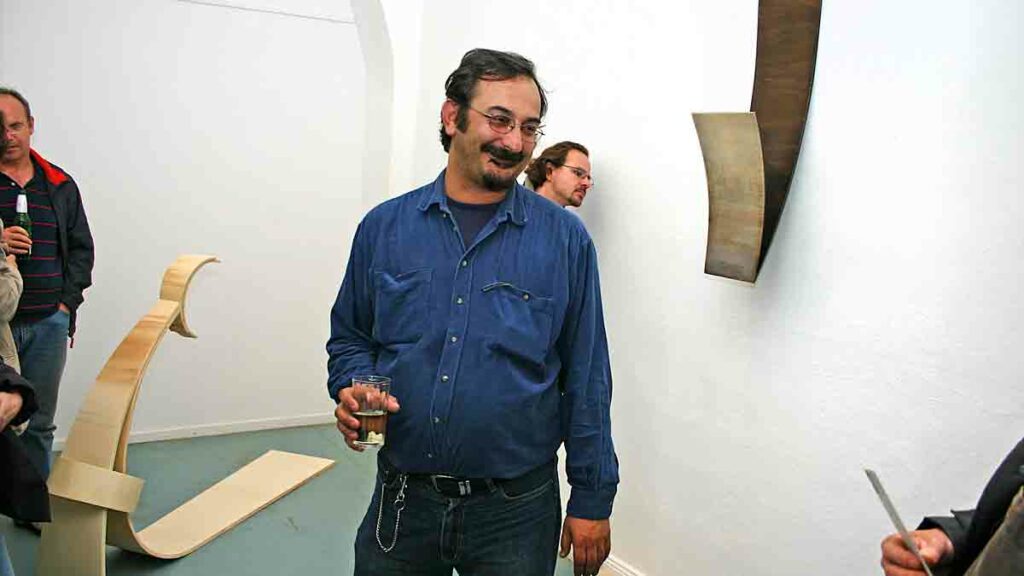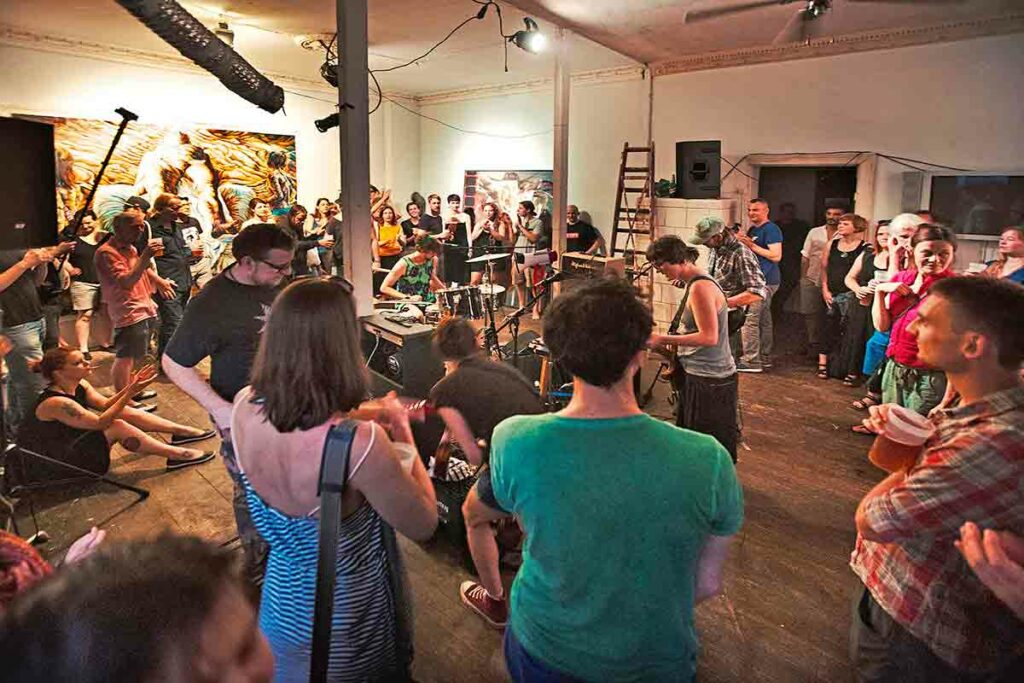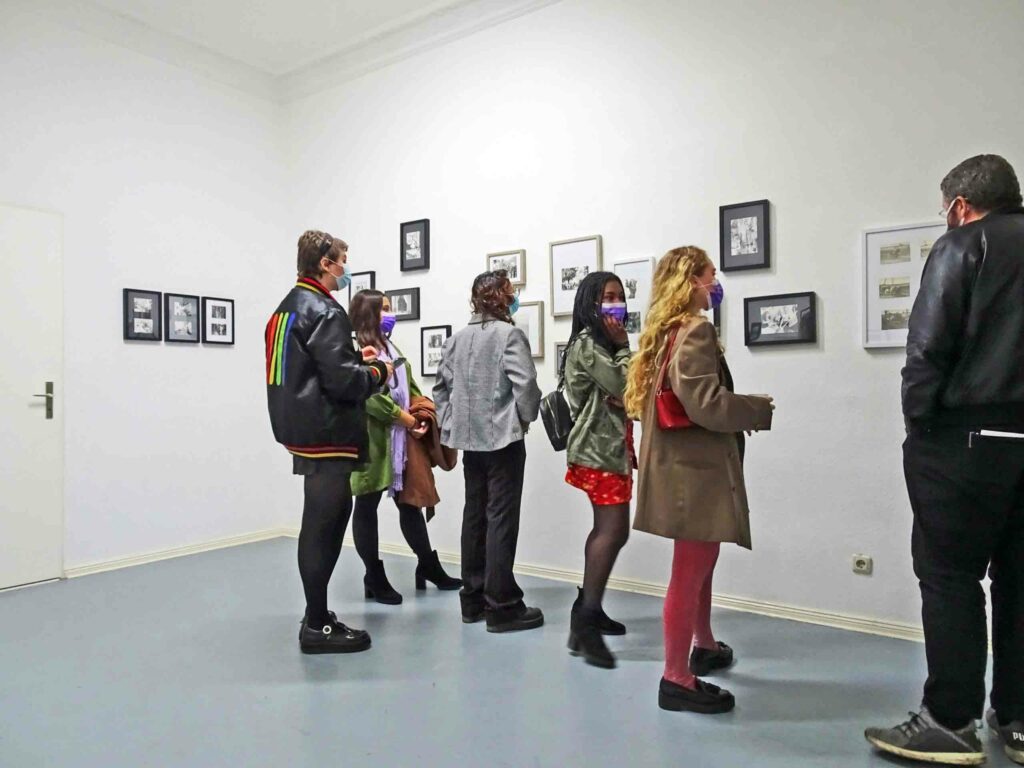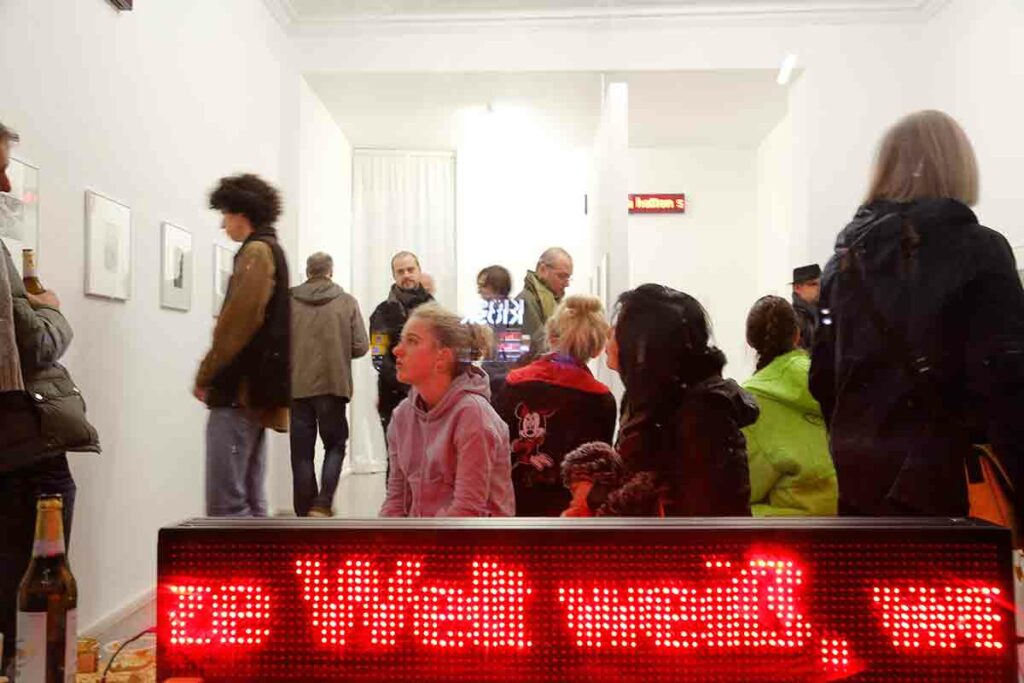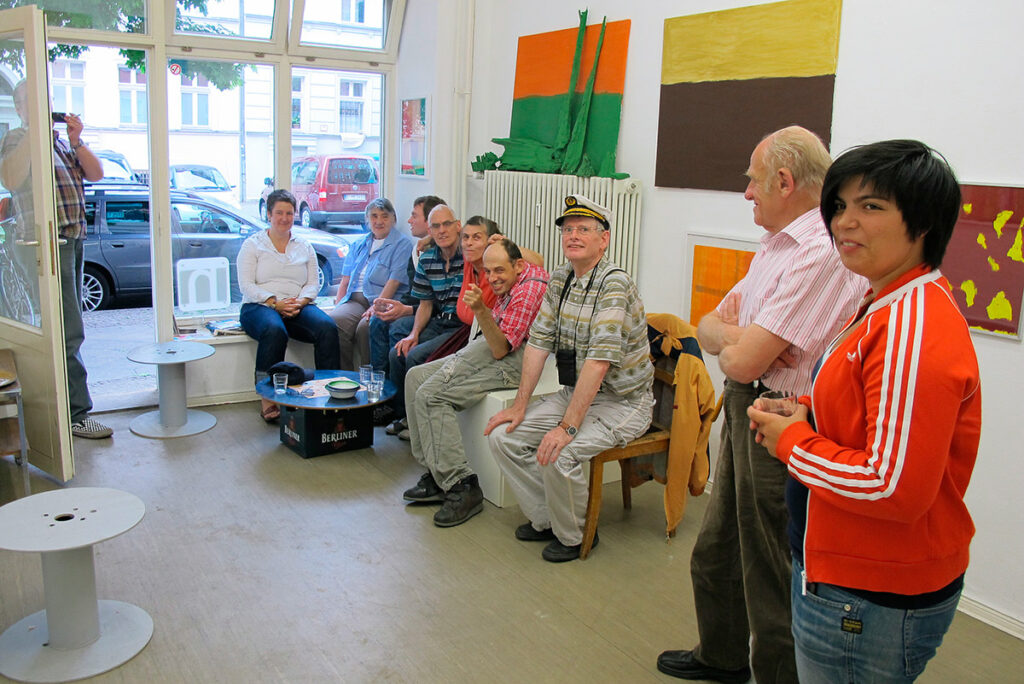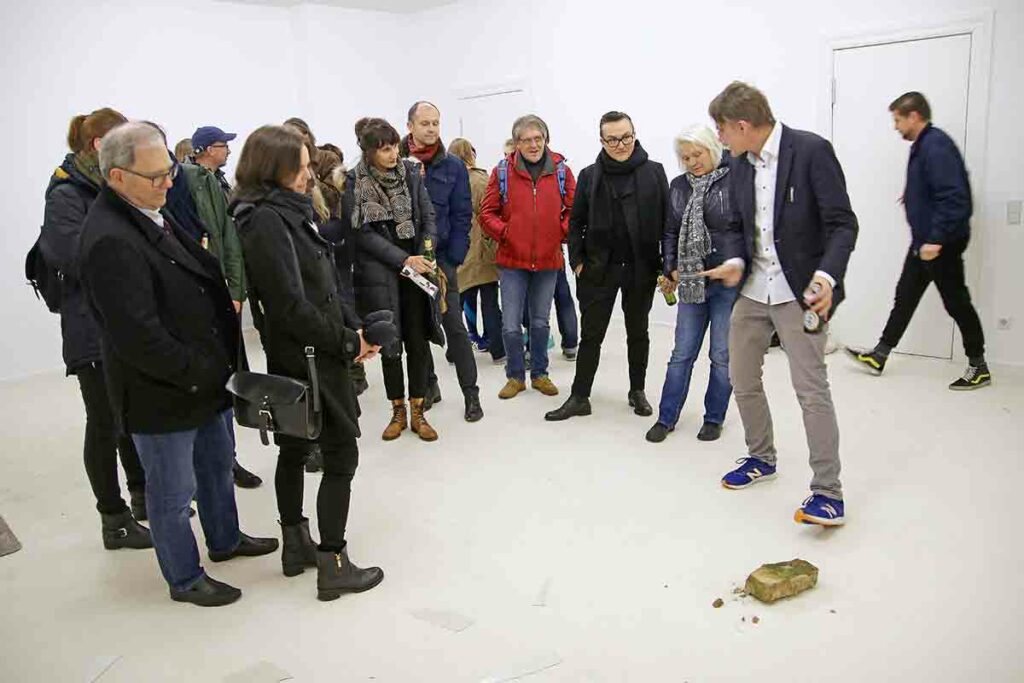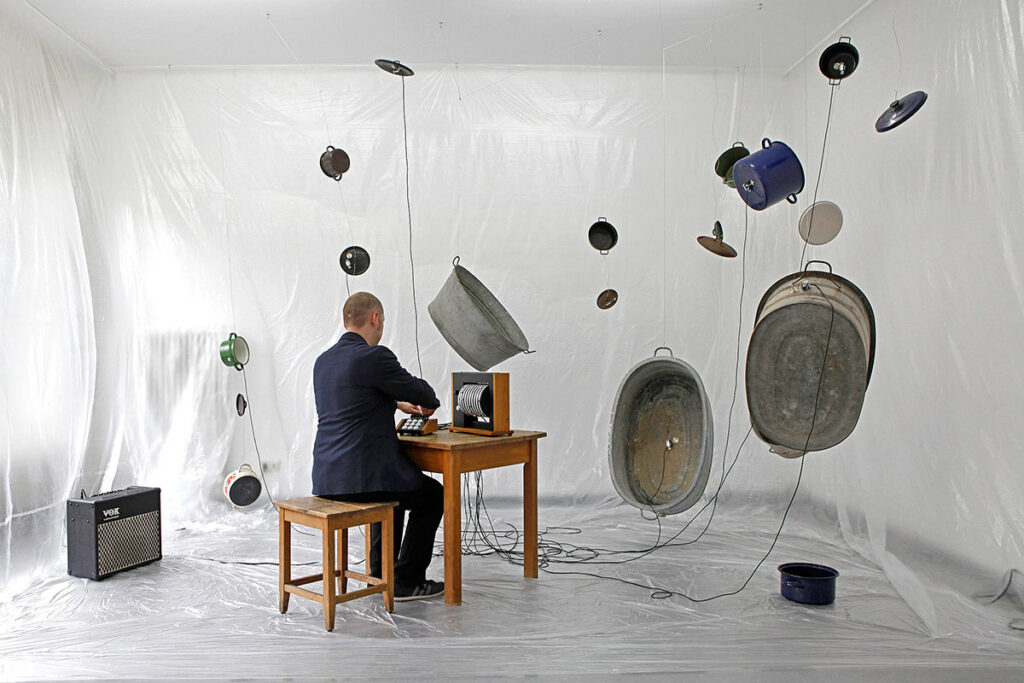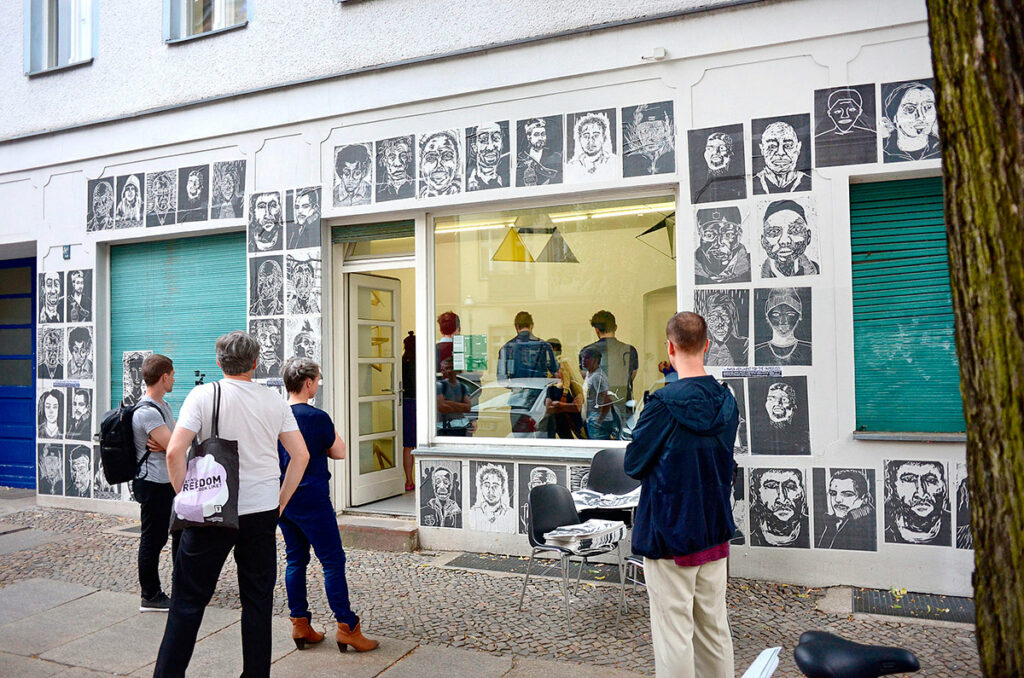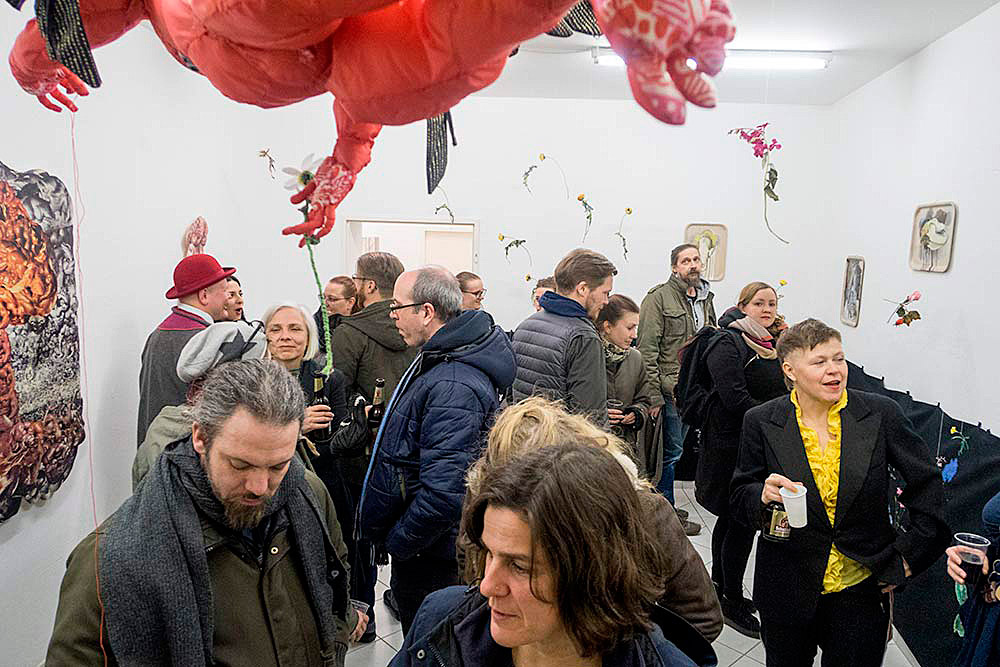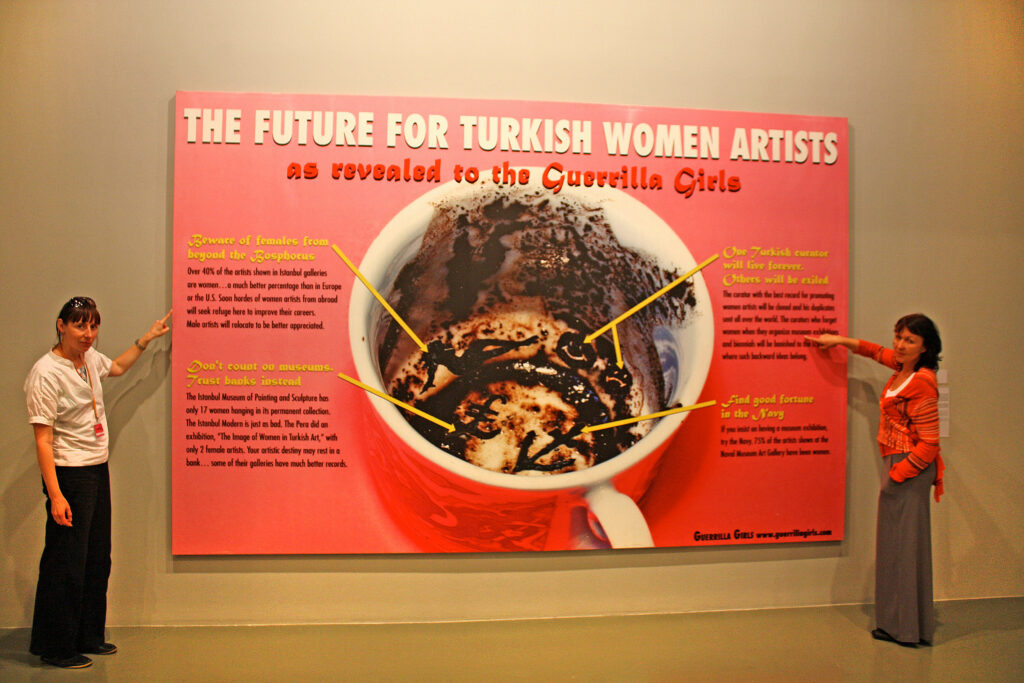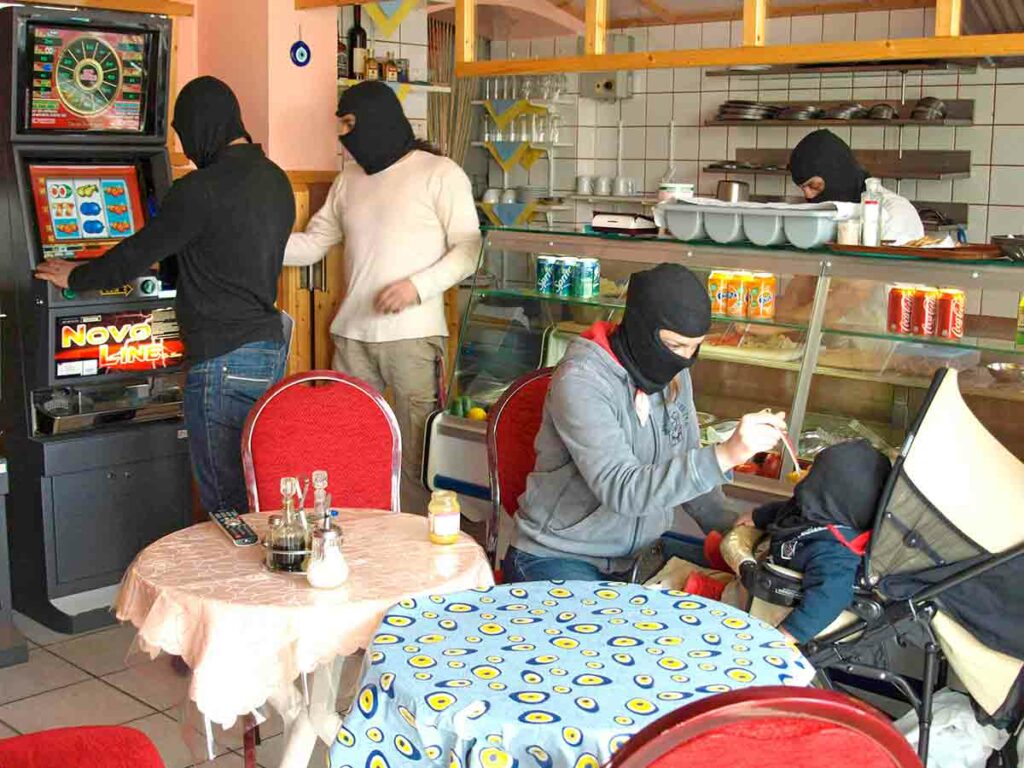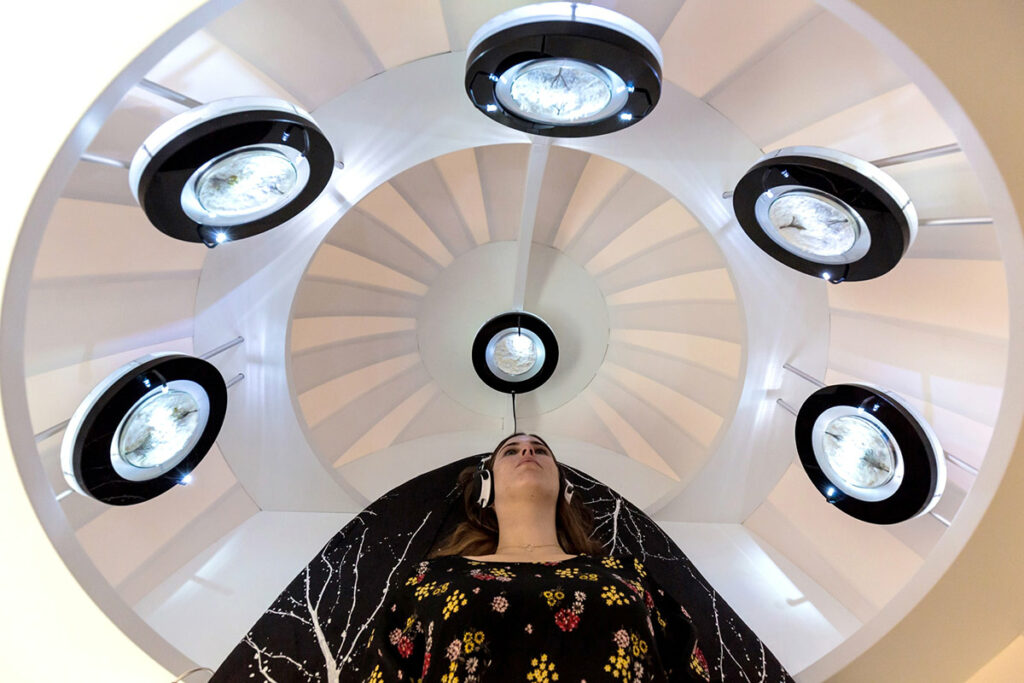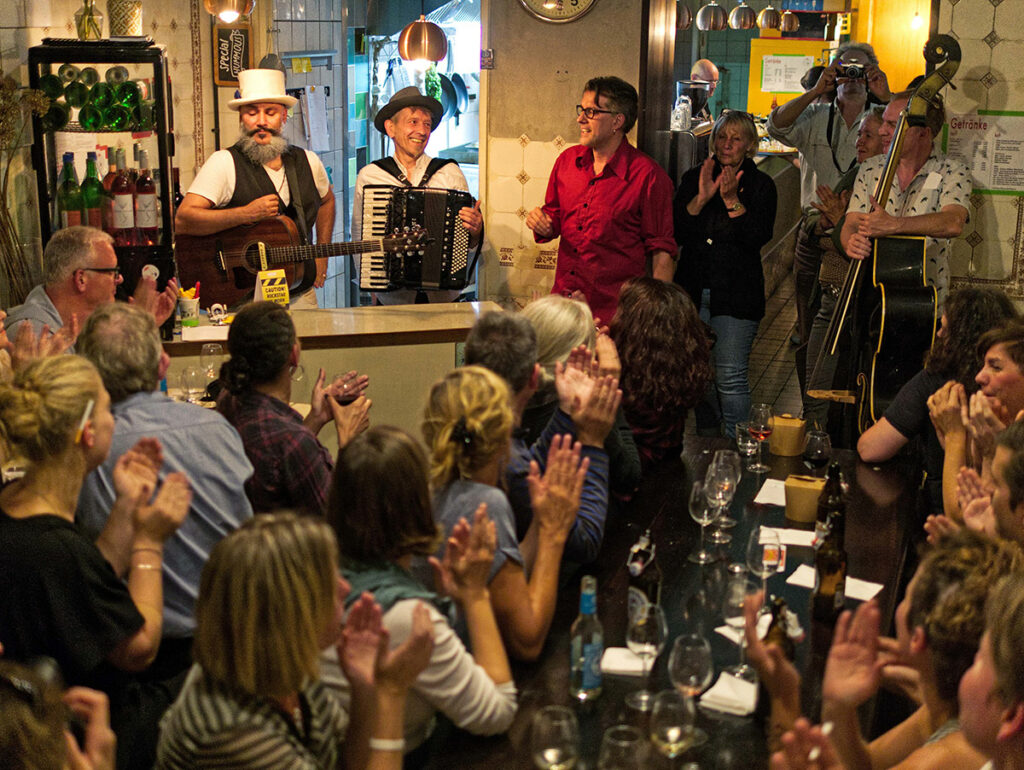Mission. Vision. Values.
The Kolonie sees itself as a space of possibility whose projects, initiatives and cooperations are not based on marketing criteria. The heterogeneity of its members and the art on display characterise the work of the Kunstverbund. In self-organised exhibitions, confrontations with political, social and intercultural themes are reflected in artistic-aesthetic issues that appeal to a broad audience interested in art. The continuous activity of the colony promotes the revitalisation of the Soldiner Kiez culture and establishes Wedding as an art location in Berlin.
20 years Kolonie Wedding
Text by Anna E. Wilkens on the occasion of the 20th anniversary of the Kolonie Wedding
The beginnings
In 2001, the very first evening of openings took place on 16 June in the then newly founded Kolonie Wedding in the Soldiner quarter. With the support of the Soldiner Straße neighbourhood management and the Berlin housing society degewo, the project space association was launched as an engine for making the resident artists visible and for structural improvement of the neighbourhood. After only a few years, 29 project spaces were already members of Kolonie Wedding.
A unique project
The coordinated evening of openings at Kolonie Wedding, always on the last Friday of the month, is unique in the world. Equally unusual are the guided tours on this evening and the following Sunday. This coordination of the openings with the guided tours has even prompted a master’s thesis on the Kolonie Wedding, written at the European University Viadrina in Frankfurt/Oder, in which the author draws parallels between diffuse museums, a contemporary new form of the museum with scattered locations, and Kolonie Wedding (La Vigna, 2017).
On a Kolonie Wedding evening, one can see in quick succession the most diverse art in spaces with quite divergent curatorial approaches, for example, singularly unique paintings by a Berlin artist, then a Finnish- Swedish group exhibition of sculptures and drawings, video art by a Brazilian group of artists, experimental installations by artists from New York, and then have a long interesting conversation with a cartoon artist from Israel or a Dutch conceptual artist.
In the twenty years, there have been around 2000 exhibition openings at the Kolonie Fridays, not counting the many openings on other dates – some of the spaces show several exhibitions per month – plus countless festivals, concerts, readings, lectures, workshops, and other projects. Today, in 2021, the Kolonie counts 25 active project spaces.
The world and the neighbourhood
The Kolonie Wedding has both an international character and orientation and a very local one: many of its members have immigrated to Germany from other countries, and the Kolonie maintains lively exchanges with projects and artists all over the world (with a focus on Europe). The artists exhibiting in the Kolonie’s rooms come from all over the world – including Berlin.
The Kolonie regularly organises exchange exhibitions in which the artists of the Kolonie show their works in other countries, for example in Hyvinkää, Finland, in 2017, in Novi Sad, Serbia, in 2019, and in Cluj-Napoca,Romania, in 2021. In 2019, members of a project space association from Los Angeles exhibited in the Kolonie’s spaces; the return visit was postponed to 2022 due to the pandemic. A milestone in the context of international art discourses for the Kolonie Wedding was the project Unter Nachbarn (Among Neighbours) in 2009 in the context of the 20-year city partnership Istanbul-Berlin with exhibitions and performances in the partner districts Istanbul-Cihangir and Berlin-Mitte/Soldiner Kiez.
In all participatory projects, local networking is also cultivated and the neighbourhood is included, for example in workshops for children, performances on the street, frequent readings, lectures, concerts and festivals.
In this way, Kolonie Wedding succeeds in playing a role both in strengthening the community in its neighbourhood and in the development of new approaches in the arts. Berlin’s international appeal as an art capital benefits from this: ‘If Berlin is the “artists workshop of Europe”, project spaces are its vital yet fragile heart.’ (S. Marguin, in: von hundert, 4/2012, http://www.vonhundert.de/index2bbc.html?id=409)
Project spaces as a location factor
For twenty years, the members of Kolonie Wedding have been working exclusively on a voluntary basis; the project spaces can show experimental, controversial and not for sale art, exactly because they are not market-oriented. The fact that the Kolonie has now reliably existed for so long is surely due not least to a flat hierarchy; members and visitors alike are integrated, with their very personal idiosyncrasies, and can thus make substantial contributions to the whole, with comparative freedom; it is a ‘different understanding of exchange, in that […] equality is preferred to competition’ (Marguin).
The Kolonie Wedding acts like a roof under which the individual spaces can develop independently in curatorial terms.
This extraordinary commitment by the many people who have been involved in and contributed to the Kolonie Wedding for twenty years is definitely a reason to celebrate.


